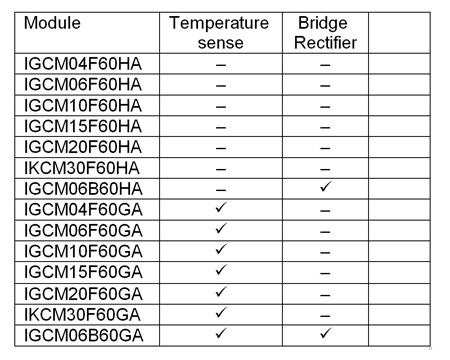Author:
Wolfgang Frank, Heiko Rettinger, Infineon Technologies AG, Germany; Junbae Lee, Daewoong Chung, LS Power Semitech, Republic of Korea
Date
09/01/2010
All applications, which support the comfort in our daily life, are supposed to be invisible - or at least small, light weight, and silent. These applications are home appliances, such as vacuum cleaners, washing machines, fridges, freezers and ventilation systems. Noise emissions in these applications are especially crucial, because many of these systems run 24 hours a day and noise is critical, particularly during sleeping time. Variable speed drives are an important step to reduce acoustic noise. Additionally, the drives´ electronics is likely to be integrated within the motor into a small space. Increasing the power density requires mandatorily an excellent thermal concept of the system or lower power dissipation. Many applications, for example electrical drives, already use modules having a high functionality including logic, analog, and power features. Such modules are the core of the system. Hence, the modules themselves need an excellent thermal performance and integrated components which dissipate less energy. This leads to the well known optimization forces: Optimization of thermal performance of the package Optimization of the electrical performance of the integrated power devices The optimization of the power semiconductors are the key to higher integration ratios, which means higher power density and higher efficiency. The less losses being dissipated inside a space unit, the smaller the space can be.
Infineon Technologies is the technology leader in diode, IGBT, and MOSFET technology. It developed thin wafer technologies, trench gate technologies, and recently reverse conducting technologies. These technologies cover the market trends of high efficiency and reliability and open the door towards ongoing miniaturization.
The superior performance of Infineon's reverse conducting IGBT is demonstrated in the technology trade-off plane. This plane shows the turn-off energy eoff normalized to the rated current versus the saturation voltage VCE(sat) according to Figure 1. It can be seen, that the turn-off energy eoff of Infineon's IGBTs is significantly lower than the turn-off energy of state of the art IPMs (-35 %). This is a big step to lower switching losses for all applications, especially for those, which operate at high switching frequencies, such as fans.
The new reverse conducting IGBT technology is employed in a new generation of intelligent power modules (IPM). In respect to the excellent electrical performance of the IGBT, it is possible to provide the markets smallest form factor in the area of IPM up to 2.5kW. The package concept avoids expensive materials such as ceramics, insulated metal substrates (IMS) or direct copper bonded substrates (DCB). The key technology is to generate an extremely thin mould compound layer above the lead frame, so that the thermal resistance for the heat flow is very low.

Figure 2 shows a cross section of the new package concept. A lead frame construction carries the power semiconductors. Only a thin mould compound layer insulates the heat sink from the lead frame. The gate drive IC is mounted on a PCB.
The gate driver is based on silicon on insulator technology. This means, that the gate driver IC is exceptionally robust against transient negative voltages. Such voltages may occur, when parasitic inductances generate voltages, which reversely bias high side pins in respect to ground. The inherent technological insulation inhibits substrate currents. The specified negative voltage transient SOA is fully rectangular with -50V for a duration of 500ns according to Figure 3. The driver IC shows therefore stable operation in these cases.

Other monolithic technologies react with latching the current status of the high side for several 100μs or even milliseconds, so that repetitive short circuit is the consequence. The gate drive IC supports system reliability with the following features:
The new product family is available in 4 current classes from 6A over 10A, 15A up to 20A. Two more current classes of 4A and 30A will optimise the extremely high cost performance ratio of home appliance applications. The portfolio will therefore give a powerful answer to all requirements. The dimensions of the package allow even two different module topologies:


The topology of b) in Figure 4 is extremely attractive for applications below 300W. It offers integrated rectifier diodes, which reduces the required space on system level. The target applications are speed controlled compressors in refrigerators, small pumps, and freezers. The total power dissipation inside the package is then increased by means of the additional losses of the rectifier. However, it is easy to understand, that also the mounting effort is reduced compared to systems with a separate bridge rectifier, because a separate one needs an additional screwing process. This keeps the assembly process of devices in mass production lean and low-cost. Table 1 shows the full portfolio of the CIPOS™mini family.

The CIPOS™mini family provides a complete portfolio of products for cost sensitive variable speed drive systems for home appliances, heating and ventilation and pumping applications. The setup of the three phase inverter with rectifier is considered to be the cost efficient solution for drives up to 300W, while the modules with inverter only cover a power range from 150W up to 2.5kW. The use of reverse conducting IGBT brings excellent conduction and switching properties for highest efficiency. www.infineon.com